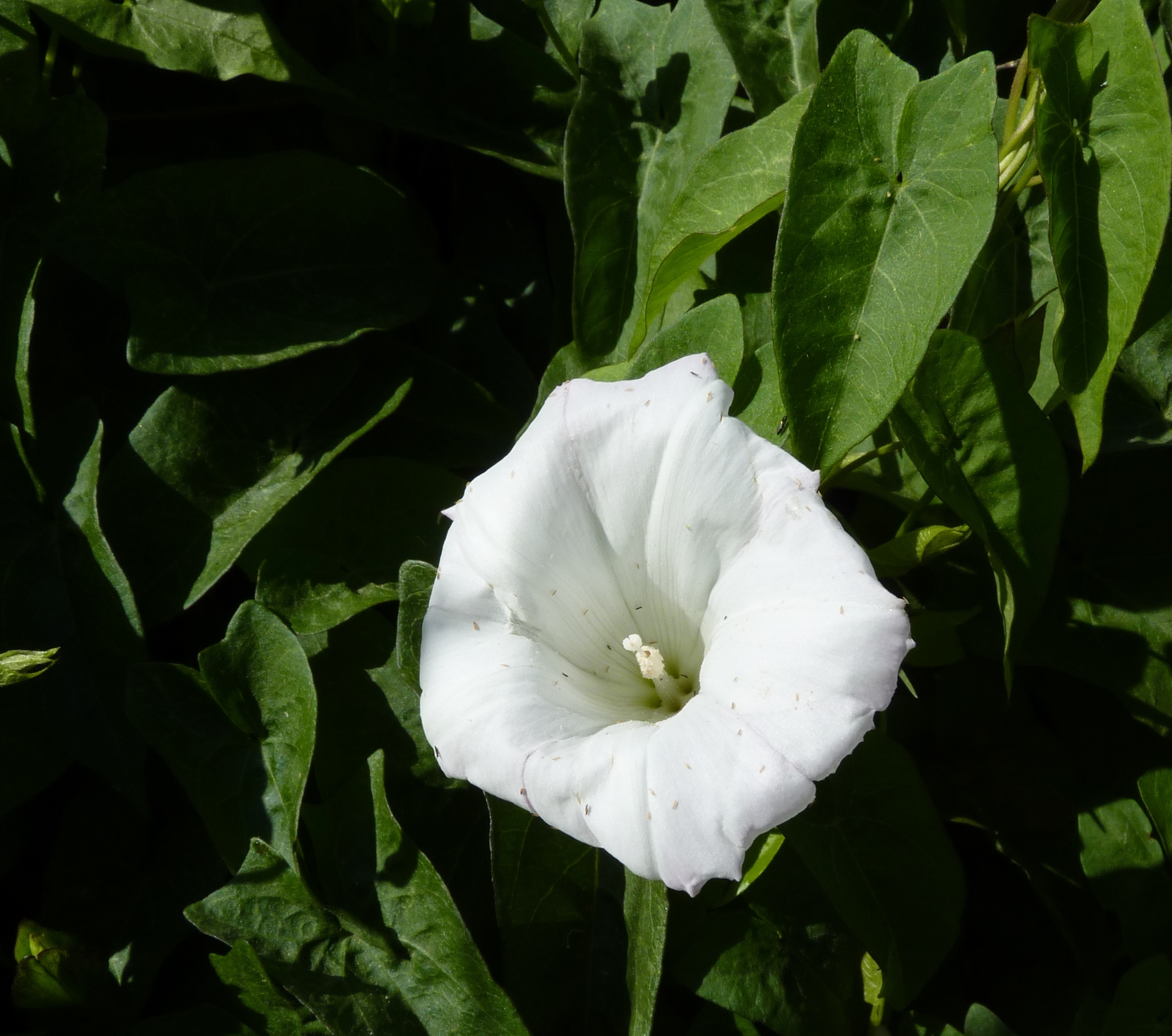
Herbs, shrubs or occasionally trees but mostly annual or perennial herbaceous climbers (sometimes parasitic and always twining to the right), often with tuberous roots and usually with milky latex. Leaves alternate, simple or compound, entire or pinnately lobed, occasionally scale-like; stipules absent. Flowers bisexual, regular, in heads or solitary, mostly 5-parted and often with 2 cup-like bracts. Sepals free or united. Petals united and generally twisted in bud, mostly funnel- to salver-shaped (often large and brightly coloured). Stamens 5, attached at the base of the flower tube; nectary disk surrounding the ovary. Ovary superior, of 2 fused carpels and to 5 chambers. Fruit generally a capsule, occasionally a drupe or nut.
Rarely cultivated species include: Evolvulus pilosus Nutt., a spreading silky grey-leaved plant from SW USA with lavender-pink to blue flowers in summer and listed under several cultivar names; Merremia tuberosa (L.) Rendle,Wood Rose, of floral decorations, a yellow-flowered plant grown widely in the tropics where the white-flowered Poranopsis paniculata (Roxb.) Roberty, Christmas Vine, from India, is also popular; Polymeria, sometimes grown as the species P. ambigua R. Br., P. calycina R. Br. and P. longifolia Lindl.
Ipomoea batatas is the Sweet Potato or Yam and other species in this genus have tubers that are eaten by Aborigines. Some species are the source of hallucinogenic or medicinal compounds; occasionally the leaves are also edible. Medicinal compounds are extracted from the tubers of a few species of Convolvulus.
Flowers often short-lived.
56 genera and 1600 species, cosmopolitan but mostly tropical and subtropical.
Source: (2002). Convolvulaceae. In: . Horticultural Flora of South-eastern Australia. Volume 4. Flowering plants. Dicotyledons. Part 3. The identification of garden and cultivated plants. University of New South Wales Press.
